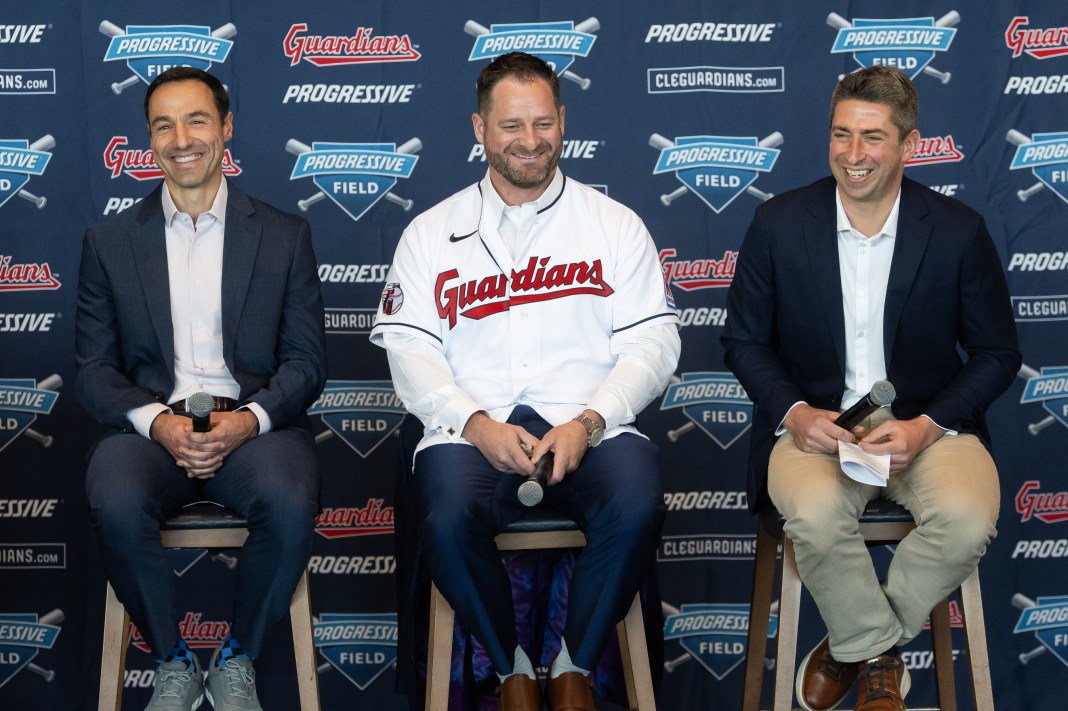How to use analytics and sabermetrics in MLB betting
I’m here to tell you that analytics are getting a bad rap in the sports world these days. The concept of analytics is such a polarizing topic, but both sides are guilty. Too many members of the anti-stats crowd and the pro-stats crowd are not willing to find the necessary middle ground between explaining their value and also keeping an open mind that the metrics should not always be treated as gospel.
As another baseball season approaches, I will be writing a lot of analytics-driven content to break down my process, which includes statistical deep dives into players and teams to find season win total bets and also get prepared for the day-to-day grind of 162 games in 187 days for all 30 teams.
Top MLB Resources:
The stats I use in baseball are collectively called “sabermetrics”, in honor of SABR, which is the Society for American Baseball Research. There is a tremendous wealth of knowledge out there in the baseball community and new stats are being invented daily, weekly, and monthly that are used to analyze player performance, especially relative to peers.
I make it a priority every season to explain the stats and metrics that I use, but this introduction to sabermetrics and baseball handicapping is going to be more of an overview. For the glossary of stats and terms that I use, you’ll be able to find that at VSiN.com when I give it a refresh prior to the season.
What are analytics?
To me, the fundamental issue between those who use and believe in analytics and those who besmirch and belittle them is the messaging. As a bare bones definition, I would define “analytics” as statistics or metrics used to quantify what the eyes can see.
Even something as simple as “That guy stinks” can be very true on both sides of the spectrum. The purpose of analytics is to determine how much “that guy stinks”. Using numerical analysis to compare that player to his peers, players in previous eras, or simply compare him to the league average would be a form of analytics.
We’ve all been watching a game and thought that a guy was a bad baserunner. Or a bad outfielder. Or a bad hitter. Maybe all of those things are true, but maybe he’s a bad outfielder on balls hit to his left or balls that he has to go back on, rather than being bad in all facets of the position.
Maybe a bad hitter is bad at hitting curveballs and sliders, but he’ll crush fastballs thrown in the upper third of the strike zone. Generally speaking, professional athletes aren’t bad at everything. If they were, they wouldn’t be professional athletes.
Because of the stats and metrics, we can analyze all of those things. Teams can as well, so they can attempt to put their players in the best positions to succeed. As handicappers, we can use those things to examine whether or not those players will succeed.
“Analytics” has also become a catch-all term for every stat, every model, every prediction engine, and everything wrong with sports. The word has acquired a negative connotation in my opinion because too many people don’t take the time to understand the value of them and too many people don’t understand that there are ways other than analytics to describe an event. It doesn’t have to be one or the other. It can be some of both.
To use a football example, I will admit that I find flaws with decision-making models like the ones that say when a team should go for it on fourth down or not. There are variables in play – weather, personnel, game flow, and even gut feel, among others. A coach being reluctant to go for a fourth-down play when he lost his left tackle in the first quarter or because his primary running back is on injured reserve are reasonable considerations. It also takes conviction to perform at optimal levels and if a head coach isn’t feeling it, he may not be in the right frame of mind to pick a play at a crucial time.
To use a baseball example, I loathe sacrifice bunts. There are plenty of calculations out there with regards to run expectancy and win probability that point towards bunting being a bad idea more often than not. But, those models don’t always account for how good or how bad of a hitter that the guy in the bunting situation is. Or how good the pitcher is. Or whether or not the baserunner has enough speed to go first to third or second to home if required. Or whether or not the closer is fully rested if the goal in bunting is to try and take a one-run lead in the bottom of the eighth inning.
There are a lot of variables and those decisions have to be made very quickly, so the law of averages comes into play, either based on similar down and distance or baserunning situations in a historical context or with whatever other factors are applied.
Ultimately, the player in question has to execute or the play call also has to work for it to be viewed as successful, but that’s why a lot of analytics-driven individuals, myself included, consider the process to be more important than the results. Outcomes are not absolute, but making the right decision that gives the event the best chance at succeeding should always be the goal.
How to use analytics when betting on MLB
Allow me to give you my favorite examples of sabermetrics in action.
By this point, most everybody is familiar with on-base percentage (OBP). If you read Michael Lewis’s book Moneyball or saw the movie starring Brad Pitt, you are well-versed in that statistic. The idea is that a hitter’s primary goal is to get on base by any means necessary. In doing so, that hitter did his job and it is up to the next guy to do his job and so on.
While on-base percentage is a better metric than batting average – a thought that continues to meet resistance, but is more widely accepted than ever – it is still a flawed statistic. Both of them are, when you really think about it.
Batting average (Hits / At Bats) counts every hit the same. On-base percentage (Hits + Walks / Plate Appearances) treats every way of reaching base the same. Fundamentally, though, isn’t a home run better than a single? Isn’t a double better than a walk?
That’s why I use a stat called wOBA, or Weighted On-Base Average. The ‘w’ is the key part in wOBA because the ways of reaching base are weighted based on their run value, correctly valuing a home run more than a single or a double more than a walk. I especially like to use this stat when looking at a pitcher’s platoon splits, meaning how a righty does against left-handed or right-handed batters or how a team does against a particular pitcher.
Good players are still good players and bad players are still bad players based on the wOBA scale, but it provides additional context and information. That’s just one of the many metrics that I use.
I’ll look at “contact quality metrics” such as Hard Hit%, Barrel%, and Exit Velocity for hitters and pitchers. Why? Because the harder a ball is hit, the more likely it is to become a hit and the more likely it is to become an extra-base hit.
A hard-hit ball is a batted ball with an exit velocity of at least 95 mph. Last season, all batted balls hit at least 95 mph had a .506 batting average with a 1.008 SLG. Hard-hit contact is good for hitters and bad for pitchers, so that is a main part of my handicapping and a way to use analytics to your benefit.
It is my belief that a knowledge of baseball analytics can get you out in front of line moves to get a good number and some closing line value (CLV) and also allows you to look at the game from a deeper level than the oddsmakers can, which should, in theory, create the opportunity to find edges.
I will be diving more into the world of baseball analytics as Opening Day approaches and throughout the course of the season as we get more data. I would encourage all readers to keep an open mind, whether they read and follow my work, read and follow others, or try to pick winners on their own this season because there is value in the numbers.





